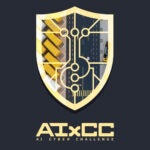OpenSSH 9.4 released!
“Call for testing”
message on the openssh-unix-dev
mailing list, OpenSSH 9.4 has been released!
The complete release notes may be read here:
https://www.openssh.com/releasenotes.html#9.4p1
The complete release notes may be read here:
https://www.openssh.com/releasenotes.html#9.4p1
 Read the original post at: Read More
Read the original post at: Read More
The post OpenSSF to Support DARPA on New AI Cyber Challenge (AIxCC) appeared first on Linux.com.
Open source lies at the heart of Mozilla and our Manifesto. Despite its ubiquity in the current technology landscape, it is easy to forget that open source was once a radical idea which was compared to cancer. In the long journey since, Mozilla has helped create an open source browser, email client, programming language, and […]
The post Openness and AI: Fostering innovation and accountability in the EU’s AI Act appeared first on The Mozilla Blog.
1st Time In Electronic Media’s History Complete Translation & Tafseer Of Quran Kareem.
#ShujaUddinSheikh #DauraeTarjumaeQuran #ARYQtv
Subscribe Here: https://bit.ly/3dh3Yj1
Official Facebook: https://www.facebook.com/ARYQTV/
Official Website: https://aryqtv.tv/
Watch ARY Qtv Live: http://live.aryqtv.tv/
Programs Schedule: https://aryqtv.tv/schedule/
Islamic Information: https://bit.ly/2MfIF4P
Android App: https://bit.ly/33wgto4
Custom WordPress development is a highly specialized process that involves building a website from scratch to meet the unique needs of a business. It offers a wide range of benefits, including greater scalability, better content management, expert guidance, and ongoing support and maintenance.
One of the most significant advantages of custom WordPress development is that it allows businesses to optimize their websites for search engines. By incorporating the latest SEO best practices, businesses can improve their website’s visibility, attract more organic traffic, and ultimately boost their online presence. Moreover, custom WordPress development can ensure that a website is accessible to all users, including those with disabilities, by ensuring ADA compliance.
Another key advantage of custom WordPress development is that it allows businesses to create websites that are secure and robust. Skilled developers can leverage their technical expertise to build a website that is not only highly functional but also secure against cyber threats. This is especially important for larger organizations that handle sensitive data and require a high level of security to protect their customers’ information.
In addition to its technical benefits, custom WordPress development can also provide businesses with expert guidance on content management. By working with experienced developers, businesses can learn how to create and manage high-quality content that resonates with their target audience. This, in turn, can help them build stronger relationships with their customers and position themselves as thought leaders in their industry.
Moreover, custom WordPress development can offer ongoing support and maintenance to ensure optimal website performance and functionality. This can minimize downtime, reduce the risk of technical issues, and maximize user engagement. By partnering with a custom WordPress development company, businesses can rest assured that their website is in good hands and focus on their core business activities.
In conclusion, custom WordPress development offers a wide range of benefits for larger organizations looking to establish a strong online presence. By leveraging the latest technology and trends, businesses can create a website that is not only well-designed and user-friendly but also optimized for search engines, secure, and accessible to all users. With expert guidance, ongoing support, and a custom approach tailored to their specific needs, businesses can position themselves for long-term success and growth in today’s digital landscape.

Automated testing is the process of creating and implementing code to decrease the manual human effort needed during software testing. This vital approach plays a crucial role in modern software development, where specialized tools and scripts are used to execute test cases, validate functionality, and identify potential issues. By automating repetitive and time-consuming tasks, significantly reduces the manual effort required, enabling testers to concentrate on more critical aspects of the testing process. Embracing automated testing enhances efficiency, accelerates the development lifecycle, and ensures consistent and reliable results across various environments and platforms.